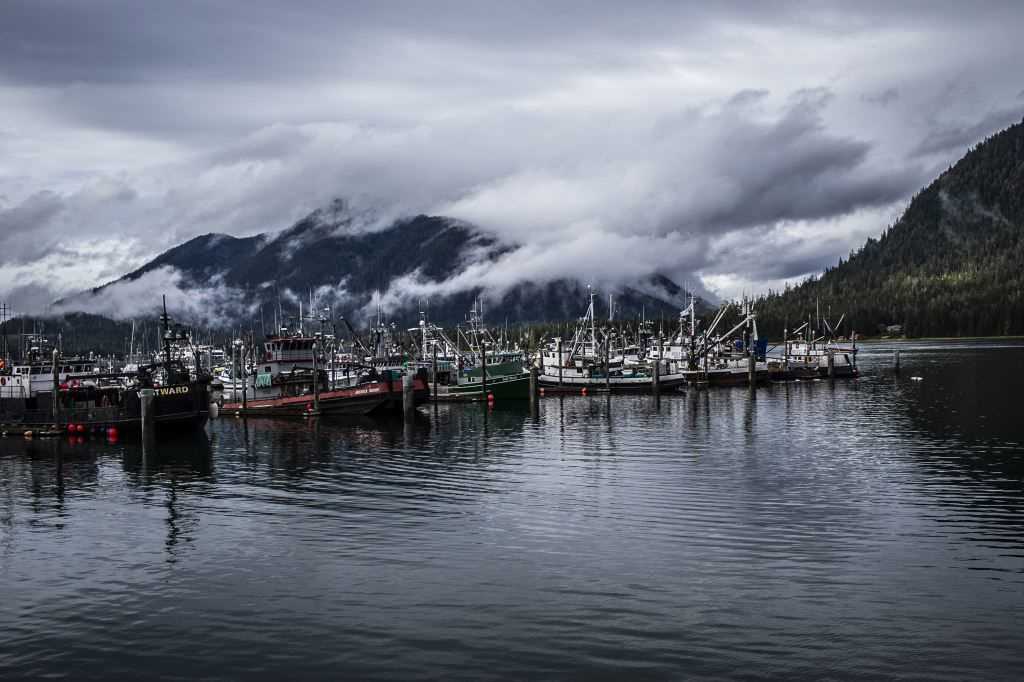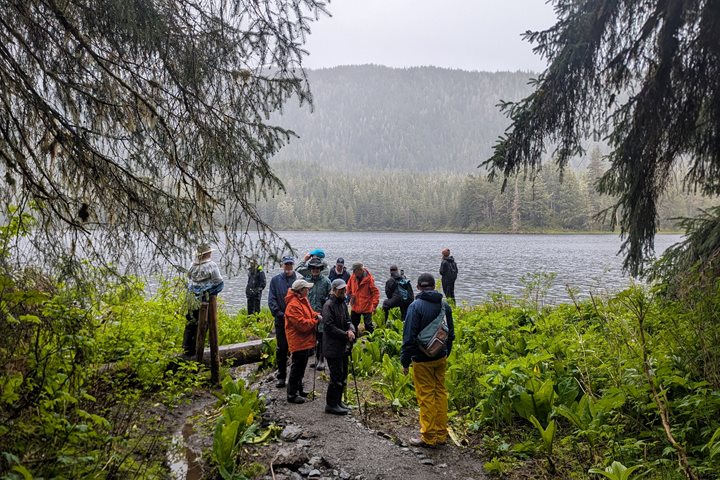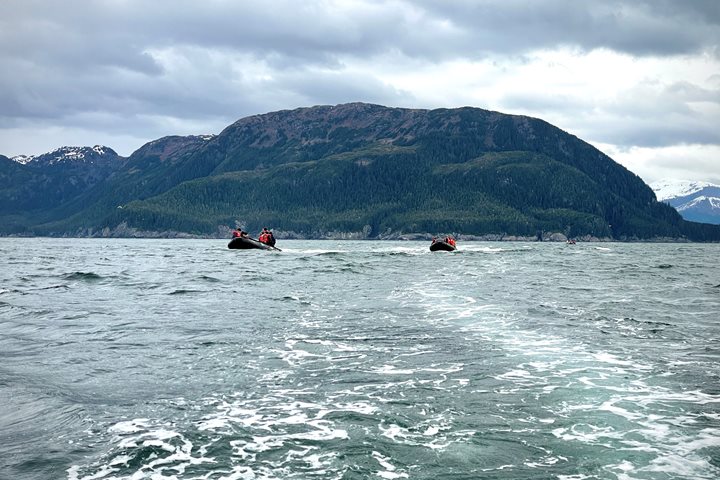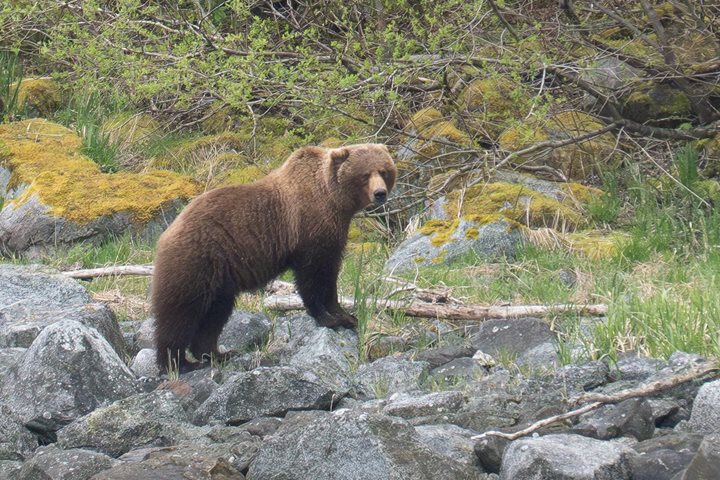Our Friday morning began by docking National Geographic Quest alongside in Petersburg, Alaska. Petersburg is a town with a rich history of fishing and continues to be one of the most economically relevant landing sites for fish and shellfish in Southeast Alaska. Not only does this coastal community boast a storied history of fishing and logging, but it is also home to multiple generations of Norwegian descendants. Walking around the town and throughout the docks gives plenty of evidence that the Scandinavian tradition lives on. Atop the masts of fishing vessels, the Norwegian flag can be seen flying, and the dock is decorated with a replica Viking ship.
Guests split early after breakfast on a variety of adventures, from bicycle tours around the town, walks through Main Street, a dock tour to identify all the fishing vessels and gear that make fishing in Southeast Alaska possible, as well as a magnificent walk through a muskeg bog in the Tongass National Forest. Guests who found a walk in a temperate rainforest appealing hitched a Zodiac ride across the channel from Mitkof Island to Kupreanof Island, where naturalists guided small groups through the forest. After identifying several dozen species of lichen, moss, and woody vegetation under the dense forest canopy, we emerged into the light as the spruces yielded to the acidic soils of the muskeg bog.
Muskeg, or peat bog, is a unique association of plant communities and physical conditions. Muskeg habitats are marked by desert-like plants that persist in a paradoxically wet habitat. This habitat boasts an abundance of water, but very little of which is drinkable by the plants that are rooted there. The muskeg is home to insect-eating plants, black tailed deer, and bald eagles. Before turning around and heading back to our Zodiac, we marveled at three black tail deer foraging in the muskeg. Our pace on the descent to the shore was twice that at which traveled up to the muskeg. After all, we still had the town and its history to explore!







